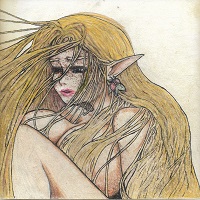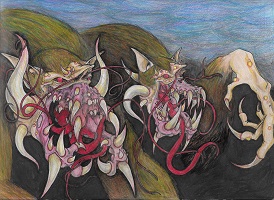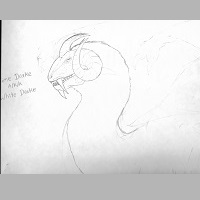
Descallhe Dralhadhanlhe
Copyright © 2002-2017 by Dustin Jon Scott
[Last Update: Decemberrd, 2017]
Like most Palaeoboreanic epics, The Descent of the Drayad follows a fairly typical Palaeoboreanic narrative structure, containing an antegesis (pre-story), imegesis (in-story), diegesis (through-story), and exegesis (out-story).
Sections
Επυλλιον Αλφα: Antegesis
The antegesis (pre-story) begins quaint, innocent, wholesome, and when the Dryad Serenity meets the Darkelf she becomes enthralled with, it looks to be amping up into some sort of ancient romance novel.
This seems to have been a plot device intended to lull the listener into a false sense of security.Επυλλιον Βητα: Imegesis
In the imegesis (in-story), things take a dark turn as the heroines find themselves in a twisted, nightmarish hellscape; at times, a bloodbath. The imegesis describes the first major part of the journey, in this case the Catabasis or “going down” or descent into the Underworld.Επυλλιον Γαμμα: Diegesis
In the diegesis (through-story), the characters continue their quest, out of the Underworld and toward the story’s climax. The diegesis describes the “main” part of the quest; in this case, what the ancients would call the Anabasis or “going up” to acheive the main characters’ goal.Επυλλιον Δηλτα: Exegesis
In the exegesis (out-story), the completion of the quest; the return home after the climax, and also includes some “after-story”-type sequences which take place long after the events of the previous sections.


















